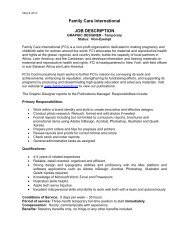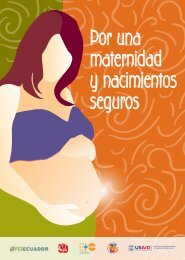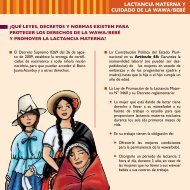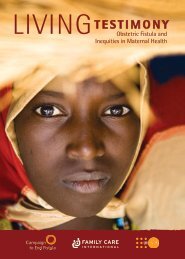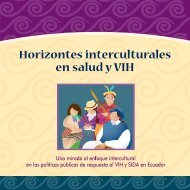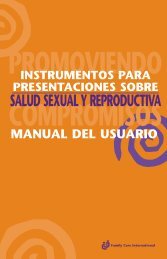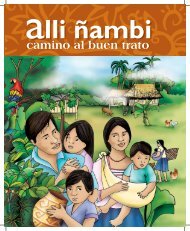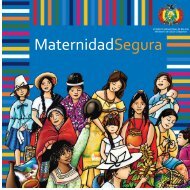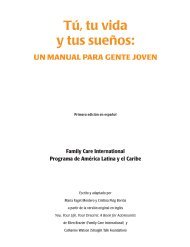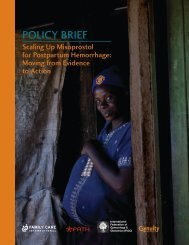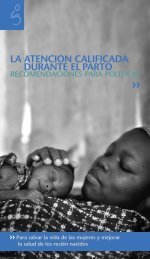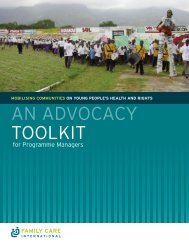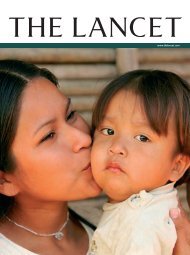Safe Motherhood: A Review - Family Care International
Safe Motherhood: A Review - Family Care International
Safe Motherhood: A Review - Family Care International
Create successful ePaper yourself
Turn your PDF publications into a flip-book with our unique Google optimized e-Paper software.
National Programs, Policies,<br />
and Budgetary Commitments for <strong>Safe</strong> <strong>Motherhood</strong><br />
Percentage of Central Health Development Budget for <strong>Safe</strong> <strong>Motherhood</strong>/<br />
Reproductive Health as Compared to the Percentage of Central Development<br />
Budget for Health, by Year, 1999–2004<br />
Percentage<br />
10<br />
9<br />
8<br />
7<br />
6<br />
5<br />
4<br />
3<br />
2<br />
1<br />
0<br />
1.13<br />
5.08<br />
1.05<br />
% Dev. Budget for Health<br />
For 2005–2010, the government is expected<br />
to elevate safe motherhood to priority status,<br />
with a corresponding increased budget<br />
allocation. The greater funding allocation<br />
for safe motherhood fits within an overall<br />
increase in health (development and routine)<br />
budget of Rp. 11 trillion in 2006, a 22%<br />
increase from the 2005 level of Rp. 9 trillion.<br />
It will be a challenge to safeguard the 2006<br />
increased allocation for safe motherhood,<br />
especially with the decentralized budget that<br />
places priority on physical infrastructure/<br />
equipment rather than health and social<br />
development programs. SWAps and other<br />
finance mechanisms such as PRSPs have<br />
7<br />
0.57<br />
8.6<br />
0.3<br />
6.7<br />
0.24<br />
6.85<br />
% Dev. Budget for SM/RH<br />
0.14<br />
7.7<br />
not yet affected funding for maternal health.<br />
Indonesia has finalized its PRSP document in<br />
2005, and has only recognized SWAps as a<br />
potential mechanism without follow-up<br />
for implementation.<br />
<strong>International</strong> Financing<br />
The figure below illustrates that health<br />
sector grants have been increasing<br />
from US$52 million in 2000 to US$95 million<br />
in 2003, with a slight decrease to US$83<br />
million in 2004. In the future, grants are<br />
expected to increase with The Global Fund to<br />
Fight AIDS, Tuberculosis and Malaria as one<br />
of the major contributors. 51<br />
Aggregated Grants for Health 2000–04 (in US$ Thousand)<br />
US Dollar<br />
120,000<br />
100,000<br />
80,000<br />
60,000<br />
40,000<br />
20,000<br />
0<br />
52,406<br />
2000<br />
58,053<br />
2001<br />
51 Fleischer, C. Donor Activity in the Indonesian Health Sector between 2000–2004. WHO country office Indonesia, May 2005.<br />
70,304<br />
2002<br />
95,288<br />
2003<br />
85,854<br />
2004<br />
51



